Speak to a specialist
Enquire now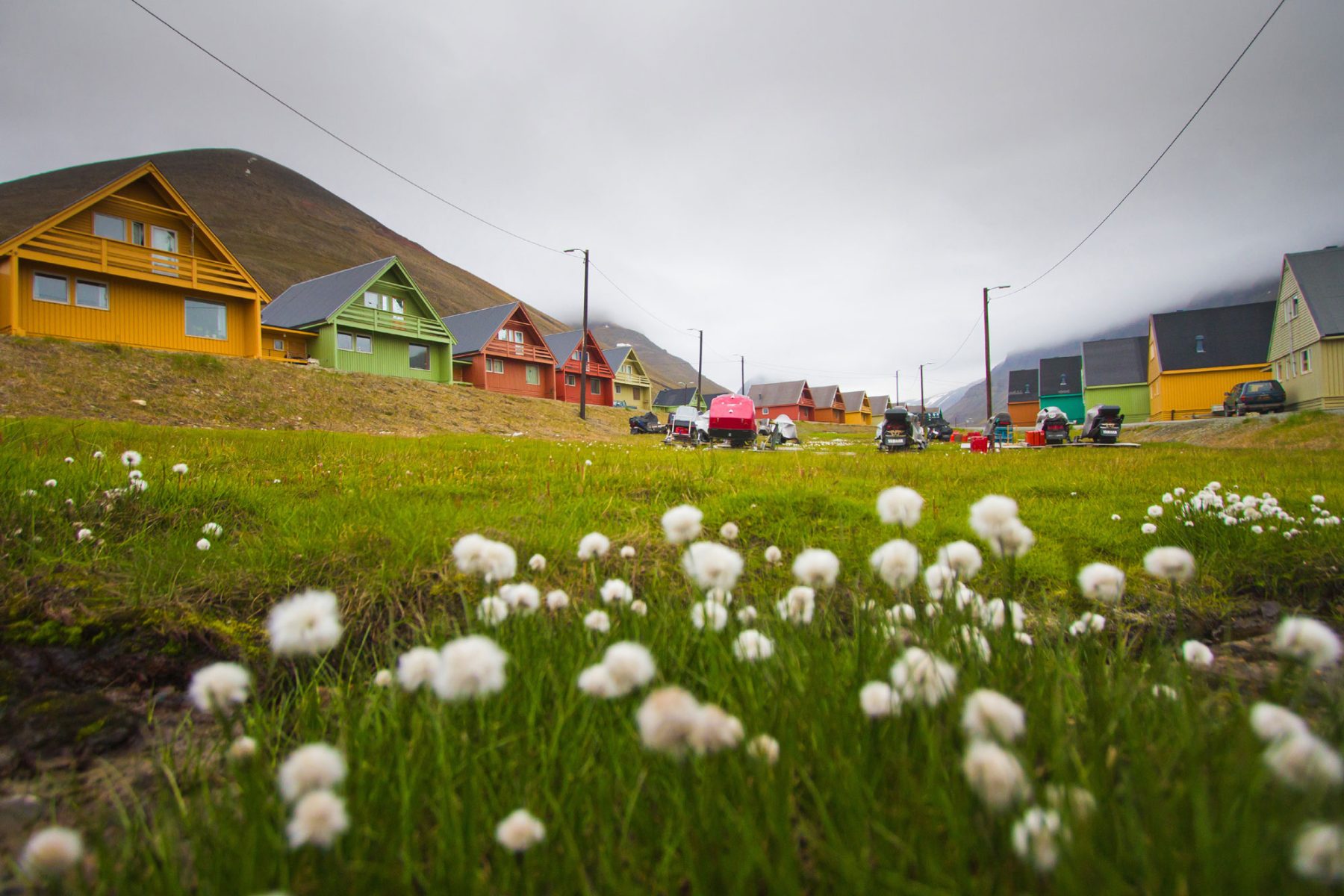
Best Time to Visit Svalbard
Located high in the Arctic, Svalbard’s seasons are marked by extremes. Whether you visit in summer or winter depends on the kind of experience you’re looking for. Go in summer if you want to witness the midnight sun, see lots of wildlife (including polar bears) and go hiking, kayaking or join a polar voyage. Choose winter if you want to experience the polar night, try your luck with the northern lights and take part in activities like dog sledding and snowmobiling.
When to visit Svalbard… at a glance
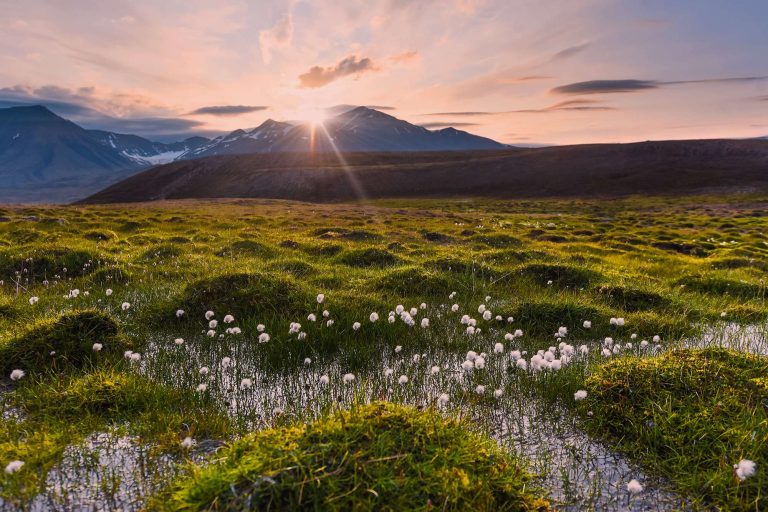
Summer
- Witness the midnight sun
- Polar voyage season
- Abundant wildlife
- Wildflowers in bloom
- Hiking and sea kayaking
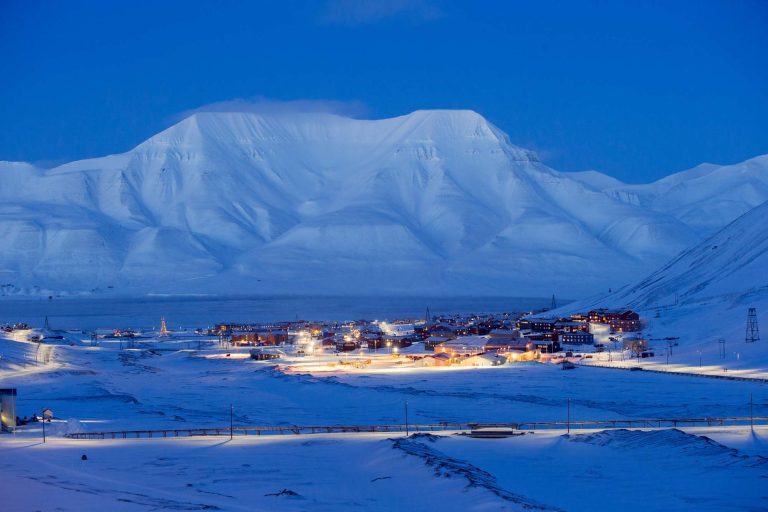
Winter
- Experience the Polar night
- Chances to witness the northern lights 24/7
- Snowmobiling and husky sledding
- Land-based packages from Longyearbyen
Svalbard in Summer (May-Sep)
With warmer temperatures and 24hr daylight, snow quickly starts to disappear in May. As the land becomes exposed, flowers begin appearing along coasts and on mountain slopes. Glaciers creak and groan as they calve icebergs into the fjords, while breeding birds (from geese and swans to Arctic terns and little auks) seize the moment, arriving to breed in their thousands. Arctic foxes are busy rearing their young, polar bears are hunting seals on ice floes and along the shore, while walruses can often be seen hauled out in large numbers on pebbly beaches.
The sea also undergoes a transformation. Fjords that were locked in ice during winter start to free themselves from its icy grip. Several species of whales, including bowhead, beluga, sperm, minke, orca, blue and humpback, are able to access the open areas of water to feed.
Summer is the perfect time to plan a wildlife holiday in Svalbard. Not only is the midnight sun shining from 19 April to 23 August, providing unlimited time for observing fauna and flora, but the break-up of sea-ice allows small-ship polar voyages to navigate around Spitsbergen and other islands in the archipelago. These provide your best chance for polar bear sightings.
Polar voyages are not the only way to experience Svalbard during summer. An alternative is to base yourself in the main settlement of Longyearbyen where a wide range of summer activities are available, such as boat safaris, hiking, kayaking, glacier walks and even dog sledding on wheels. Walruses and whales are frequently seen in Isfjorden (easily accessed from Longyearbyen) and you can also plan trips further afield to wilderness lodges like Nordenskiold and Isfjord Radio.
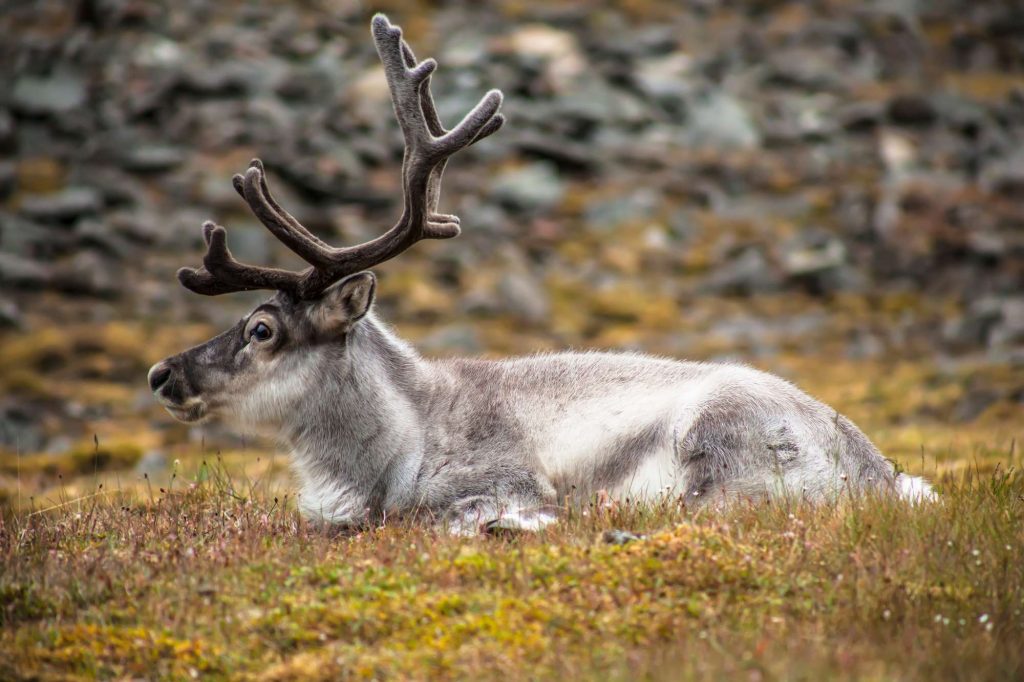
Svalbard in Winter (Oct-Apr)
In Svalbard, winter heralds the surreal blue glow of the polar night – a mesmerising period of 24hr darkness when peaks are silhouetted against an almost imperceptible light in the east, where the sun lays shy of the horizon. Star-gazers will be captivated by the vivid night skies. There’s a deep, almost spiritual, Arctic silence and when the aurora borealis begins to unfurl its curtains of phosphorescent green across this bewitching place, it’s almost as if the land is holding its breath in anticipation.
A complete contrast to summer, this is a wonderful time to visit Svalbard. Despite the darkness, sub-zero temperatures, frozen sea and snowy conditions, it’s not only straightforward to access Svalbard throughout winter (with flights from mainland Norway), but the town of Longyearbyen is a busy, year-round settlement with hotels, restaurants, shops and a range of winter activities.
Properly kitted out in polar overalls, thick mitts and boots, you can explore the frozen landscape of Advent Valley by husky sled or snowmobile. There are also snowcat tours to the Longyear Glacier where you can enter an ice cave on foot, while Mine 7 on the town’s outskirts offers a fascinating glimpse into the region’s coal-mining heritage. Longyearbyen also has a superb museum, while an excursion to Camp Barentz – a replica of the explorer’s wooden hut – is a great opportunity to learn about Svalbard’s history, enjoy a traditional dinner and hopefully witness the northern lights in all their glory.
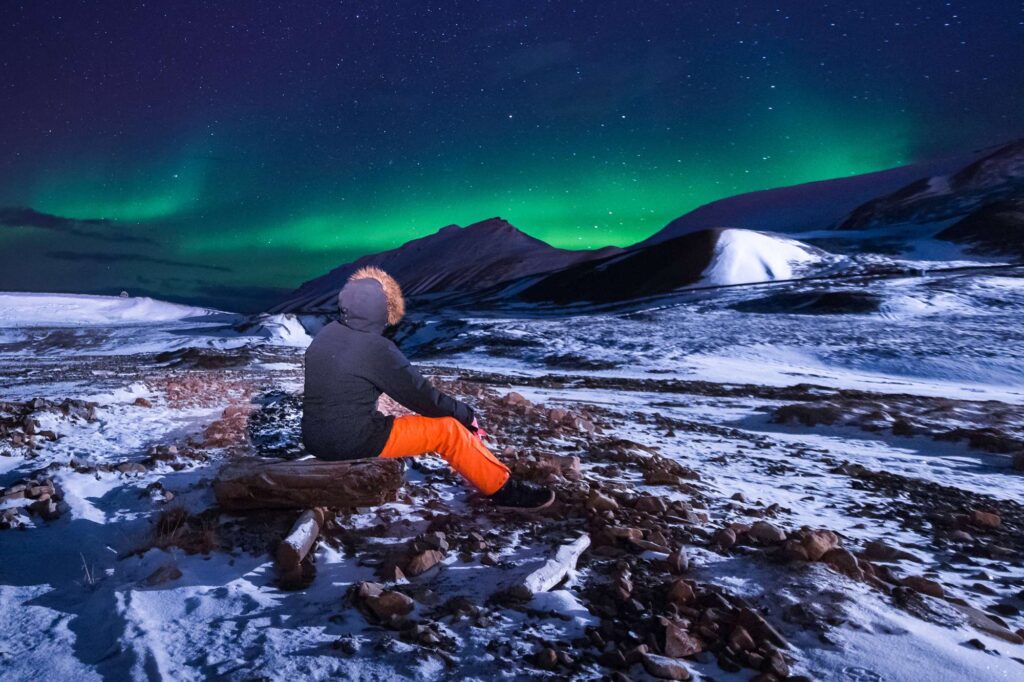
When can I experience the polar night in Svalbard?
The last rays of the sun have disappeared by the end of October. There are a few weeks of blue ‘twilight’ followed by more than two months, from mid-November to the end of January, of complete darkness: the full ‘polar night’. During this time, day and night merge. You could witness the northern lights after breakfast and go star-gazing at noon if the skies are clear. Under a full moon, or a strong display of the aurora borealis, the snow-covered mountains and valleys reflect their glow.
By February, the light begins to return, slowly, almost imperceptibly, bringing the mountains into silhouette, then blushing the highest peaks. Pink and purple shades touch the landscape. When the year’s first direct rays of sunshine strike the mountaintops, it’s a fleeting, magical and much-anticipated moment. The light grows stronger each day, with the return of the sun celebrated in Longyearbyen.
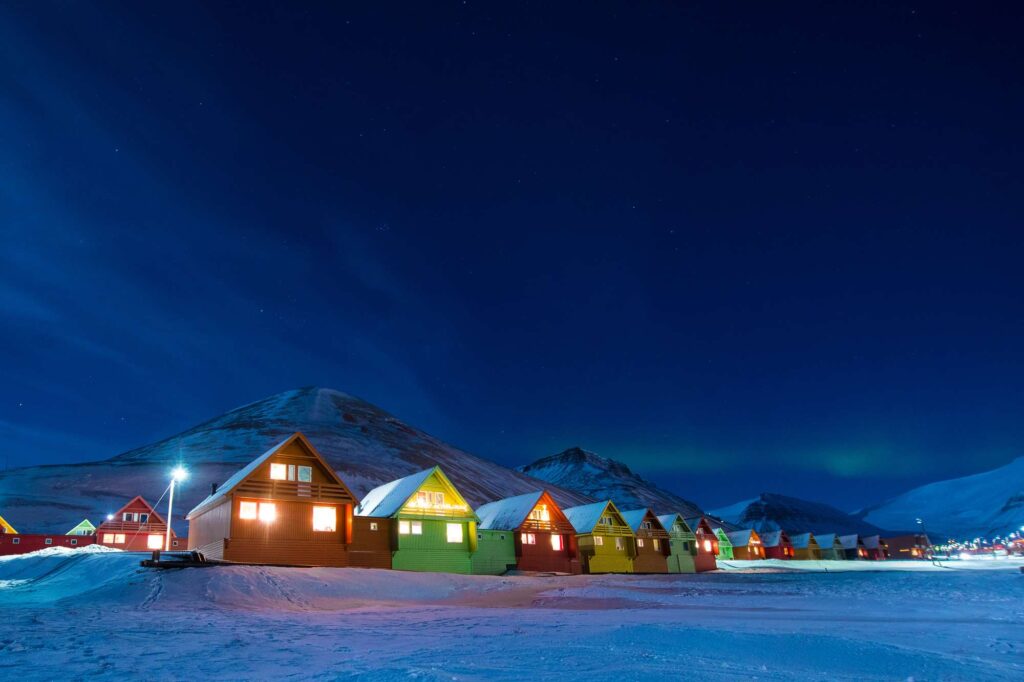
Svalbard Weather
During winter, temperatures typically range from -15°C to -20°C, but lows of -35°C are not unheard of. All outdoor activity operators provide polar suits, mitts and boots. During midsummer, average temperatures are usually around 3-7°C – but can sometimes creep up to 12°C or more (the record high is 21.3°C). Anchored in a sheltered fjord on a sunny day in summer, it can feel very pleasant! Windchill is often a big factor in Svalbard’s weather – summer or winter. Layered clothing with a wind-shell jacket is advisable at any time of year.
You can expect around 20-30cm of snow to accumulate during the winter in Svalbard, much of it blown about by the wind. Parts of the archipelago are actually classified as a polar desert, receiving very little precipitation.
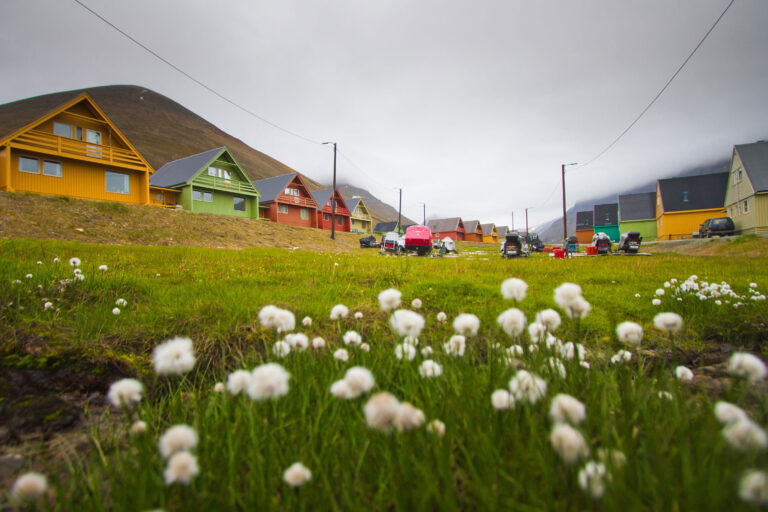
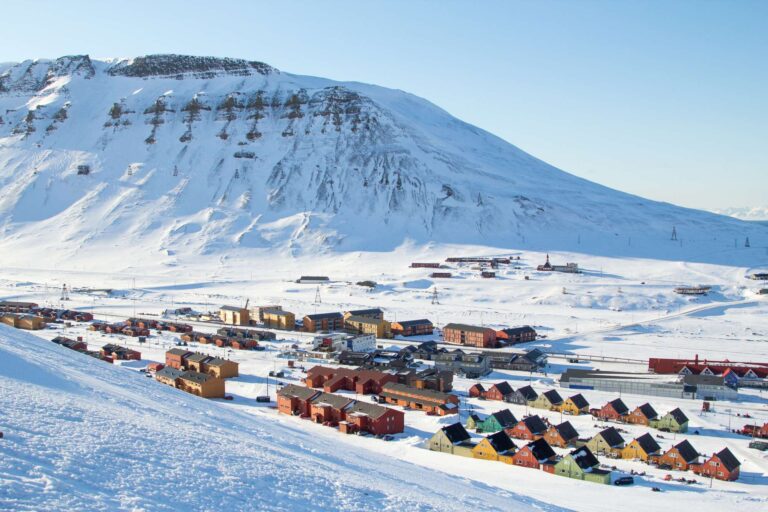
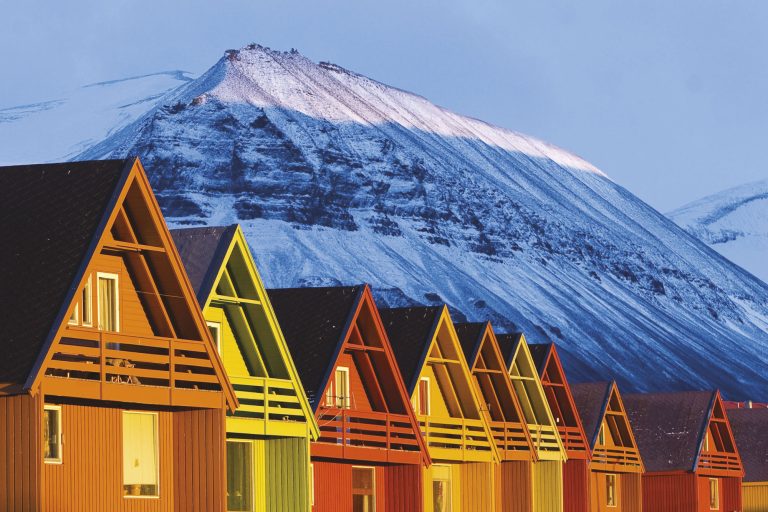
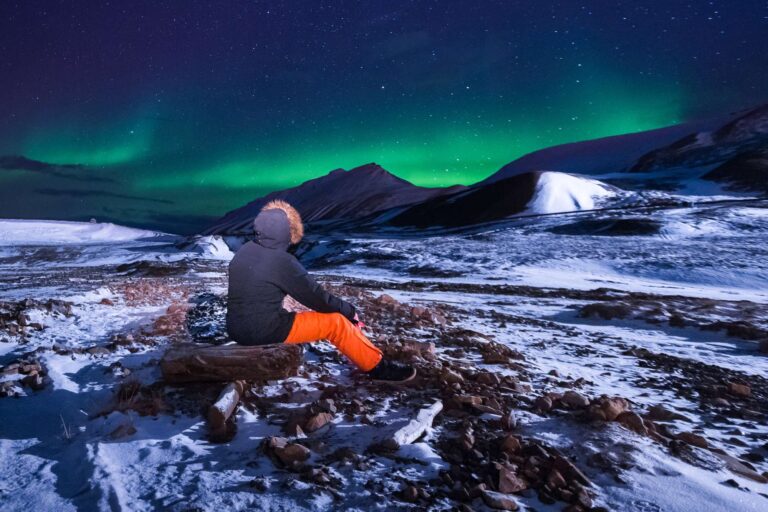
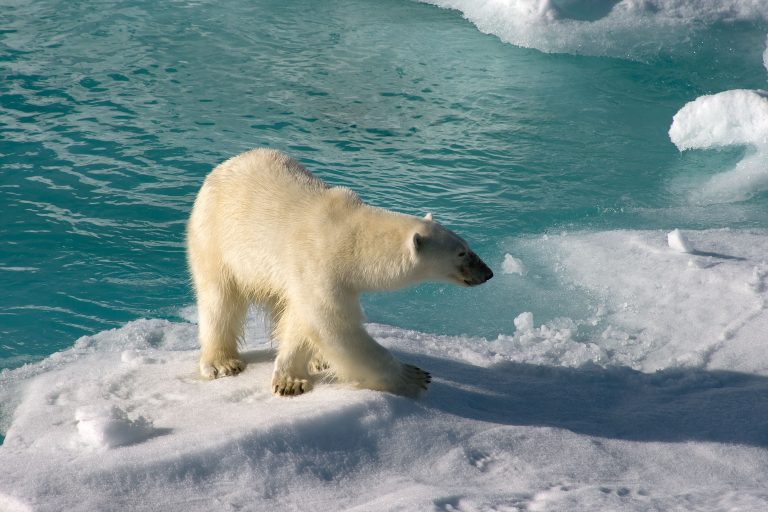



 Instagram
Instagram
 Facebook
Facebook
 YouTube
YouTube